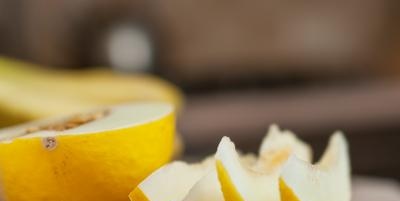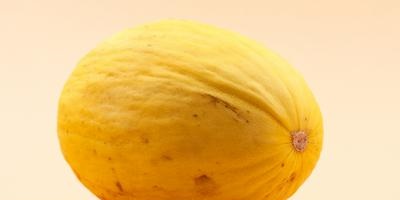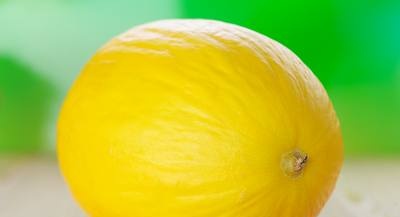|
 The real kingdom of melons is our Central Asia. Going to work, locals from time immemorial put a melon on their shoulder - a standard breakfast. With wheat flatbread, churek, and hearty and tasty. The real kingdom of melons is our Central Asia. Going to work, locals from time immemorial put a melon on their shoulder - a standard breakfast. With wheat flatbread, churek, and hearty and tasty.
To have the designated breakfast throughout the year, winter varieties of melons were bred. The longer they lie, the sweeter, more aromatic they become. And sometimes they help out in the most difficult situations.
There is a story about a cunning chauffeur who drove a car through a difficult pass. Other drivers' cars were refused halfway through the engine overheating. I had to stop, wait for it to cool down. The sly man did not stop and took the obstacle with a single spirit. Friends prayed: "Open the secret!" The sage smiled and lifted the hood. Half a giant melon lay on the hot metal of the engine. Sweet drops dripped, like after rain, evaporated and cooled the car.
There are, of course, some drawbacks to melons. They are even more difficult to transport than watermelons. Three seas cannot be taken away. The British are the most offensive. They do not grow melons. At first glance, the situation is not entirely clear. The climate of the island is mild and even. Lebanese cedars grow well, which we have taken root only on the Black Sea coast. And they cannot withstand the harshness of the weather in Central Asia, where melons thrive. However, the English climate is humid (Foggy Albion!), While melons are animals of dry, sunny regions.
The English gardeners fought for a long time, finally came up with. Greenhouses are the way out of the situation. In the greenhouses, the melons went smoothly. True, the size is dwarf. Slightly longer than the palm. And weighing half a kilo. But on the other hand! At one time, Professor N. Kichunov tried English melons. Praised: "Not bad." Later, another expert melon grower, Professor A. Pangalo, repeated the tasting. His opinion was the opposite. He was surprised at such a flattering assessment of Kichunov. And then I learned: Kichunov compared with the Queen of Melons. To make it clearer, let's say a few words about this variety.
 It appeared in 1892. The author is the same D. Lesevitsky who gave the world the Favorite of the Pyatigorsk farm. Lesevitsky dreamed of bringing melons in Ukraine the same as in Central Asia. But they didn't work out. Then he crossed the Khiva melon Zamucha with the English Skilman variety. The hybrid came out better than the English parent and worse than Zamucha, however, at the time of maturity, the melting pulp did not last long. After a week it was overripe and then it became like boiled potatoes. Slightly better than English melons, French and German. Professor K. Pangalo has tried all 40 of the best European varieties. I rated them as "small variations on one theme" - no taste, no bouquet, no sweetness. The only difference is in appearance. It appeared in 1892. The author is the same D. Lesevitsky who gave the world the Favorite of the Pyatigorsk farm. Lesevitsky dreamed of bringing melons in Ukraine the same as in Central Asia. But they didn't work out. Then he crossed the Khiva melon Zamucha with the English Skilman variety. The hybrid came out better than the English parent and worse than Zamucha, however, at the time of maturity, the melting pulp did not last long. After a week it was overripe and then it became like boiled potatoes. Slightly better than English melons, French and German. Professor K. Pangalo has tried all 40 of the best European varieties. I rated them as "small variations on one theme" - no taste, no bouquet, no sweetness. The only difference is in appearance.
The best melons in the world are Charjui. From under the city of Chardzhou on the Amu Darya. Huge, dark green. Torn from the lash - hard, almost savory and even dryish. Not a drop of juiciness. If you buy it in a store, throw it away. But it is worth lying down until winter (her name is Zimovka), as it becomes juicy, sweet and fragrant.
There are other winter melons - Kassabs. Also dark green, also large. Only not long, but spherical or even slightly flattened. The only trouble is that they are devoid of flavor. True, academician P. Zhukovsky, when he was in Turkey, managed to find Kassaba with a strong aroma. But the aroma turned out to be ... cucumber!
Ironically, the most fragrant melons are neither the largest nor the sweetest, but, on the contrary, small-fruited and slightly edible. In previous years, Uzbek dandies used to take such micro-children for festive festivities. They replaced perfume. To this day, Muslims of the East often grow micro-melons not for food, but for the sake of smell.
The smallest fruits produce wild dog melons itcahn. Their yield is amazing. Two hundred pieces ripen on one lash.
They are so similar to the cultural ones that a suspicion arises: are not the cultural melons originated from these savages? True, some believe that the opposite is true. Canine melons are cultivated feral.
It is still difficult to say who is right and who is wrong. Canine melons grow completely freely on the floodplain meadows of the Syr Darya, Chirchik, Angren between the chingil and tamarisk bushes and over the reeds. From here they storm cotton fields and corn plantations. And melons, of course. Their small fruits, the size of a walnut, are so tightly packed with seeds that there is very little room for the pulp. The taste of these melons is almost always bitter or sour. However, local dogs do not disdain them (as well as cultural ones). The seeds are distributed accordingly.
Growing a melon is an art. Special difficulties, like watermelons, with seeds. An inexperienced melon grower sows fresh seeds. They grow such mighty whips with such powerful leaves that pride fills the heart of a beginner. At his neighbors, he sees plants that are not at all so lush. They seem to him to be frail scum. However, harvest time is approaching. The neighbors are harvesting normal fruits. A beginner melon grower has nothing to collect. One decoration, almost no fruit.
 An experienced melon grower knows: old seeds are needed. Deceased. Three to four years old. If there are none at hand, you need to age fresh ones. Various options are offered. The seeds are kept in a bath before sowing. Soak in milk with sheep dung. Or just slurry. Professor K. Pangalo, who reported this, recommended soaking the seeds in the melon grower's own sweat. He also gave practical advice. The seeds are sewn into a cloth belt, which is worn while working in the field. Another classic of melon growing, I. Maklakov, known throughout Russia, recommended a similar method for watermelon seeds. He put the seeds in the pockets of his clothes (preferably in his trousers). In two weeks, the seeds were back to the same condition as during normal storage for four years! An experienced melon grower knows: old seeds are needed. Deceased. Three to four years old. If there are none at hand, you need to age fresh ones. Various options are offered. The seeds are kept in a bath before sowing. Soak in milk with sheep dung. Or just slurry. Professor K. Pangalo, who reported this, recommended soaking the seeds in the melon grower's own sweat. He also gave practical advice. The seeds are sewn into a cloth belt, which is worn while working in the field. Another classic of melon growing, I. Maklakov, known throughout Russia, recommended a similar method for watermelon seeds. He put the seeds in the pockets of his clothes (preferably in his trousers). In two weeks, the seeds were back to the same condition as during normal storage for four years!
Of all the melons, dutma is the most troublesome. The magazine "Plodovodstvo" told the world about it in 1900. He reported that there is such a melon in the Caucasus, which is grown ... underground. She is very juicy and tender. And she tastes like a pear. As soon as the fruits reach the size of a fist, they are sprinkled with earth. After that, every morning they add earth where the fruit is bared. To find out about the ripeness of his creation, the owner gets on all fours and sniffs. If it smells, the melon is ready. You can dig it out. “Do not try to cover ordinary melons with earth,” the magazine added, “everything will go to waste!”
After 30 years, Professor K. Pangalo became interested in dutma. It turned out that dutma is not a special type of melon, but a way of growing it. Translated into Russian it means "protection". A variety of melons are grown underground in Transcaucasia, even our usual Collective Farm Woman. Pangalo learned from the melon growers that underground melon is preserved from the attacks of various boogers. However, this seemed unlikely to him. An experiment was carried out for reliability. We collected several varieties of melons - both domestic and foreign, from Iran. They planted with dutma and in the usual way. We observed it for two years. No difference.
A problem arose: if dutma does not give any benefit, if only empty chores, then why is it used? If one cannot do without it, then why is there no visible benefit? Why is the harvest the same: what's underground, what's on the ground?
And here Pangalo's experiments came to Asadov's memory. Why was the yield of melons the same in them? Why then, in Transcaucasia, did the dutma not have an effect? Here's what turned out. Melon fly does not affect all varieties. In Transcaucasia, the Shami variety was found, which does not require earthen protection. The most important thing is not that. The melon fly is not common in all areas. She is a real scourge in Nakhichevan, in Armenia. And on Absheron, near Baku, strong winds whistle and there are no good conditions for a fly. It is simply blown off the melon.
Another 30 years passed. Melon growers continued to grow melons and more and more often complained that they were annoyed by a pest - the melon fly.What was not done against her! Pollinated. Sprayed. Even the males were sterilized. However, the malevolent insect eluded retaliation and sometimes destroyed nine-tenths of the crop. It was then that they again remembered the dutma. After all, this method was specially created against the melon fly (those boogers in which Pangalo did not believe). Baku biologist G. Asadov has calculated how much benefit dutma gives to the farm. They sowed a collective farmer. Two-thirds were eaten by boogers in the usual way. Dutma kept all her fruits one hundred percent.
 In other varieties, the damage was a little less, but still more than half of the melons died. In other varieties, the damage was a little less, but still more than half of the melons died.
Therefore, it does not spoil melons and dutma is useless in Baku.
However, Asadov found out one more detail. Melons grown underground acquire a special tenderness, become sweeter and more aromatic. And they ripen earlier than those baked in the sun.
In general, melon, like no other fruit, requires ingenuity and resourcefulness. At the end of the 17th century, Tsar Alexei Mikhailovich was fond of melons. He ordered the melon masters from Astrakhan, "the quietest, kindest and most proud people." And he ordered to plant melon gardens in the suburbs. The Moscow climate is not suitable for melons at all. And damp. And a little cold. However, the Astrakhan melon growers managed to serve an excellent product to the tsar's table. They managed to accomplish the task in the following way. Having planted seedlings, they stocked up on special clothing. Two pairs of outerwear for yourself and two melon covers. They went out to melon in underwear and sat on a bench. If the chill got in, put on the first pair of underwear. And the first sheet was thrown over the melons. If the body did not get warm, the second pair was pulled. On myself and on melons too. When the sun warmed up, the operation was repeated in reverse order.
And in Turkmenistan, in the old days, melons were grown like that. We picked up low places in the desert where spring waters flow - takyr. In summer, the water will dry out. The soil will heat up and crack into polygons. Then melon growers come and sprinkle seeds on the takyr. Then they sweep them with brooms here and there, until they fall into the cracks of the earth. There is still enough moisture, and the seeds will germinate. This is where the worries end. The rest will be done by nature. Convenience is also that you don't have to weed. They simply do not exist. No weed can penetrate the shiny clay cake of the polygons.
Melons were sown even more fun in the Fergana Valley. They chose an area with a lot of camel thorns. They cut off the bushes under the root, so that a small stump remained. The tree stump was split in half and a melon seed was inserted. In any dry land, a thorn raises water from a depth. And supplies the settler with it.
No matter how difficult sowing is, storing melons is also not an easy task. Usually, the fruit is tied crosswise with reed ribbons and hung indoors. Professor K. Pangalo once hung up a large consignment of melons for storage in a storehouse where potatoes were poured. It didn't take too long for the gorgeous winter melons to take on a nasty, unpleasant taste and quickly rot. Placed with apples - and even worse. Ethylene, which was released from the apples, further accelerated the ripening. Then they tried to handle something. Doused with formalin, coated with milk of lime, irradiated with ultraviolet light. The result is the opposite. One fifth of them went bad without processing. With processing - one hundred percent! I had to go back to the old way.
A. Smirnov. Tops and roots
|
 The real kingdom of melons is our Central Asia. Going to work, locals from time immemorial put a melon on their shoulder - a standard breakfast. With wheat flatbread, churek, and hearty and tasty.
The real kingdom of melons is our Central Asia. Going to work, locals from time immemorial put a melon on their shoulder - a standard breakfast. With wheat flatbread, churek, and hearty and tasty. It appeared in 1892. The author is the same D. Lesevitsky who gave the world the Favorite of the Pyatigorsk farm. Lesevitsky dreamed of bringing melons in Ukraine the same as in Central Asia. But they didn't work out. Then he crossed the Khiva melon Zamucha with the English Skilman variety. The hybrid came out better than the English parent and worse than Zamucha, however, at the time of maturity, the melting pulp did not last long. After a week it was overripe and then it became like boiled potatoes. Slightly better than English melons, French and German. Professor K. Pangalo has tried all 40 of the best European varieties. I rated them as "small variations on one theme" - no taste, no bouquet, no sweetness. The only difference is in appearance.
It appeared in 1892. The author is the same D. Lesevitsky who gave the world the Favorite of the Pyatigorsk farm. Lesevitsky dreamed of bringing melons in Ukraine the same as in Central Asia. But they didn't work out. Then he crossed the Khiva melon Zamucha with the English Skilman variety. The hybrid came out better than the English parent and worse than Zamucha, however, at the time of maturity, the melting pulp did not last long. After a week it was overripe and then it became like boiled potatoes. Slightly better than English melons, French and German. Professor K. Pangalo has tried all 40 of the best European varieties. I rated them as "small variations on one theme" - no taste, no bouquet, no sweetness. The only difference is in appearance. An experienced melon grower knows: old seeds are needed. Deceased. Three to four years old. If there are none at hand, you need to age fresh ones. Various options are offered. The seeds are kept in a bath before sowing. Soak in milk with sheep dung. Or just slurry. Professor K. Pangalo, who reported this, recommended soaking the seeds in the melon grower's own sweat. He also gave practical advice. The seeds are sewn into a cloth belt, which is worn while working in the field. Another classic of melon growing, I. Maklakov, known throughout Russia, recommended a similar method for watermelon seeds. He put the seeds in the pockets of his clothes (preferably in his trousers). In two weeks, the seeds were back to the same condition as during normal storage for four years!
An experienced melon grower knows: old seeds are needed. Deceased. Three to four years old. If there are none at hand, you need to age fresh ones. Various options are offered. The seeds are kept in a bath before sowing. Soak in milk with sheep dung. Or just slurry. Professor K. Pangalo, who reported this, recommended soaking the seeds in the melon grower's own sweat. He also gave practical advice. The seeds are sewn into a cloth belt, which is worn while working in the field. Another classic of melon growing, I. Maklakov, known throughout Russia, recommended a similar method for watermelon seeds. He put the seeds in the pockets of his clothes (preferably in his trousers). In two weeks, the seeds were back to the same condition as during normal storage for four years!






































